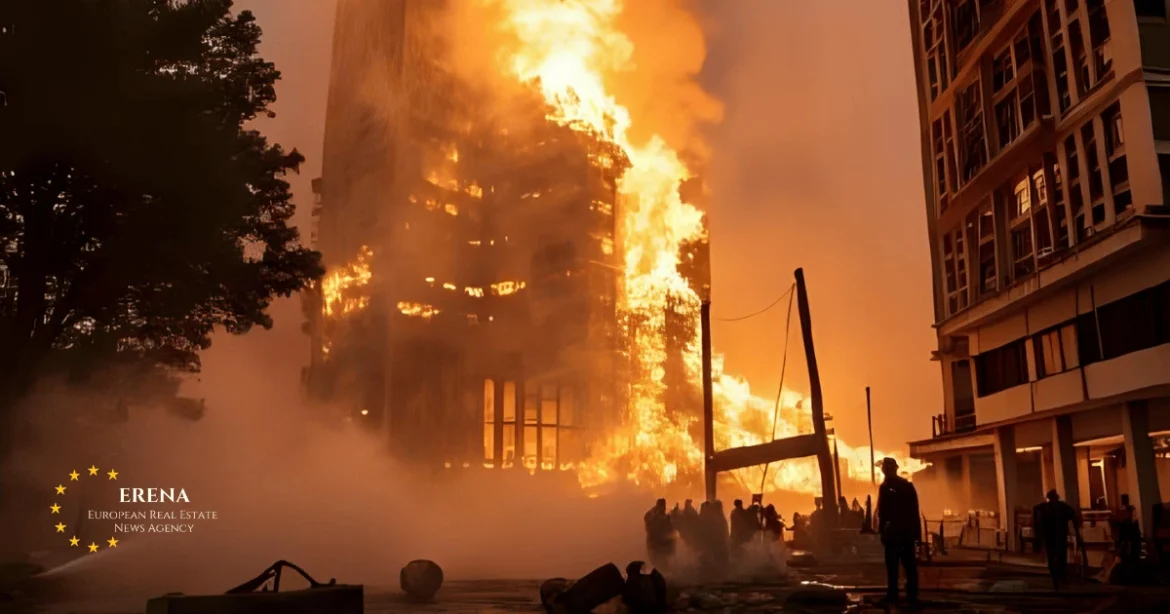Hilton Kathmandu, the tallest hotel in the Nepali capital, has been heavily damaged after protesters set fire to luxury properties during the country’s youth-led unrest. The blaze marked one of the most dramatic episodes in the so-called “Gen Z Revolution,” which has shaken Nepal’s political and economic establishment.
From Grand Opening to Closure
The five-star Hilton, officially opened on 25 July 2024, represented a milestone for Nepal’s hospitality market. With 172 rooms and rising more than 60 meters above the city, it was marketed as Kathmandu’s highest hotel and a symbol of its ambition to attract international conferences and upscale tourism.
Local investment in the project amounted to about Rs 8 billion (≈ €50 million). Barely a year later, flames and smoke engulfed its glass façade. The hotel has now closed, and Hilton confirmed that all guests and staff were safely evacuated. Engineers are assessing the scale of the damage to determine whether restoration is possible.
Casualties at Hyatt Regency
While the Hilton fire caused no direct fatalities, tragedy struck at another landmark. At the nearby Hyatt Regency Kathmandu, also attacked on the same night, an Indian tourist fell to her death while attempting to escape from an upper floor, and her husband was injured. The incident underscored growing concerns over visitor safety as the unrest spreads.
Why Hotels Became Targets
The wave of protests, driven by Generation Z demonstrators, has zeroed in on symbols of privilege. With youth unemployment exceeding 20%, activists accuse Nepal’s elites of corruption and inequality, pointing to luxury hotels as emblems of excess in a struggling economy.
International media images of the Hilton’s burning tower have amplified the sense of instability. Analysts warn that even global hospitality brands cannot remain insulated from Nepal’s political volatility.
Impact on Tourism and Investment
Tourism generates nearly 7% of Nepal’s GDP and employs hundreds of thousands of people. The Hilton was meant to strengthen the country’s high-end offer, complementing heritage hotels such as Dwarika’s. Its closure creates a gap in capacity just as Nepal was hoping to rebound from years of pandemic and political disruptions.
Insurance claims are expected to be complicated. Although many commercial policies include coverage for strikes, riots, and civil commotion, classification of the blaze as politically motivated arson could delay settlements. Nepal’s insurance regulator has urged companies to expedite claims linked to the protests.
Political Fallout
The demonstrations, sparked by anger over joblessness and restrictions on social media, have escalated into the largest youth uprising in Nepal’s modern history. Protesters have stormed parliament, set fire to officials’ residences, and torched corporate landmarks. The government has imposed curfews and deployed troops in an attempt to restore order.
International observers warn that the destruction of Hilton Kathmandu sends a chilling signal to investors and could derail Nepal’s fragile economic recovery.
Conclusion
The blackened tower of Hilton Kathmandu now stands as both a symbol of ambition cut short and a monument to popular frustration. Whether rebuilt or abandoned, it embodies the risks facing global brands in Nepal and the depth of disillusionment among its younger generation. For the country’s leaders, the challenge is no longer only reconstruction — but regaining the confidence of its restless youth and the world beyond.


